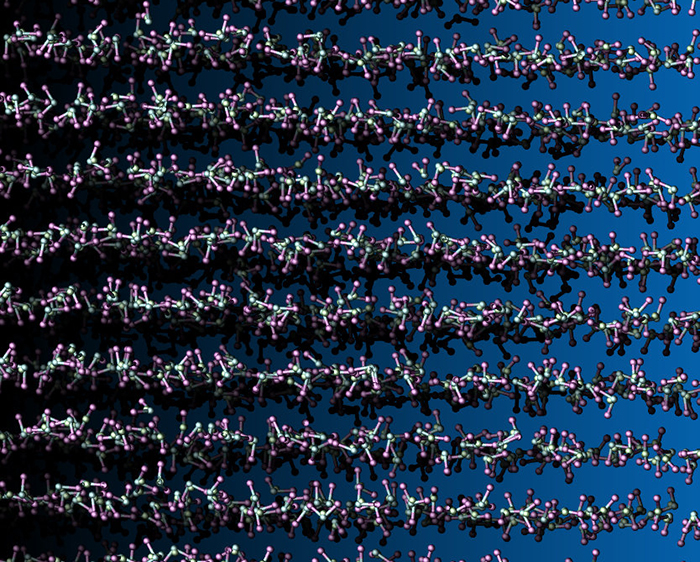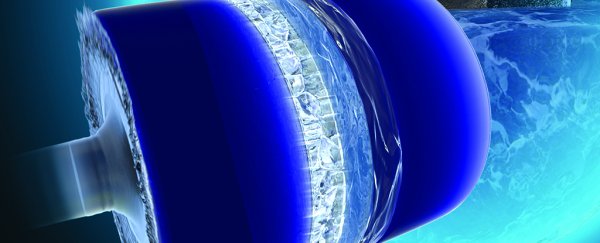New research into a very weird type of ice known as Ice VII has revealed how it can form at speeds over 1,000 miles per hour (1,610 kilometres per hour), and how it might be able to spread across yet-to-be-explored alien worlds.
This ice type was only discovered occurring naturally in March, trapped inside diamonds deep underground, and this latest study looks in detail at how exactly it takes shape – apparently in a way that's completely different to how water usually freezes into ice.
Based on a mathematical model devised by researchers from the Lawrence Livermore National Laboratory in California, there's a certain pressure threshold across which Ice VII will spread with lightning speed. This process of near-instantaneous transformation is known as homogeneous nucleation.
"This is a regime where the limits of our physical understanding are being tested," says one of the team, physicist Alex Chernov.
Scientists had already worked out that Ice VII could form under high temperatures coupled with intense pressure – around 100,000 times greater than normal atmospheric pressure – but experiments had shown it forming both homogeneously (almost all at once) and heterogeneously (from the surface inwards).
Up until now, that had physicists scratching their heads. This new research suggests a specific tipping point is the reason for the variations – as well as a difference in temperature between the liquid water and the ice crystals being formed.
These types of ice, or ice phases, also have different atomic structures in their crystals, which have a crucial impact on how the liquid water turns into solid ice. The researchers were able to determine that Ice VII initially forms in molecule clusters before spreading in nanoseconds across a body of water.
That's partly because there's no layer of heat at the point of nucleation – the point where the liquid turns solid – as there would be in ice that's freezing at normal pressures.
 Molecular ordering of Ice VII (Lawrence Livermore National Laboratory)
Molecular ordering of Ice VII (Lawrence Livermore National Laboratory)
"There is no need for the slow process of latent heat removal and the interface velocity is controlled only by very fast molecular ordering at the interface," Chernov explains.
Now that we have a mathematical model that fits the experimental data, we can apply it in all kinds of other areas of research. The existence of Ice VII itself was theorised and created in a lab first before being found packed away in diamonds.
The new explanation of how Ice VII forms at a fundamental, molecular level could have implications for the study of memory storage, material synthesis, and much more, according to the team behind the new model.
It could also prove prove useful in our hunt for life on other planets. The existence of water is used as a key indicator of whether life can exist on planets other than Earth, but if that water is pressurised enough to get zapped into Ice VII, then there might not be any life left to find.
"Water on these ocean worlds, under bombardment from other planetary bodies such as meteors or comets, undergoes intense changes for which life might not survive," senior author and materials chemist Jonathan Belof told Physics Central.
It's another clue for working out if an icy planet might be habitable, as well as just a fantastically cool example of how the boundaries of physics keep getting pushed.
The research has been published in Physical Review Letters.
